Pattadakal – Temples built by queens, not kings
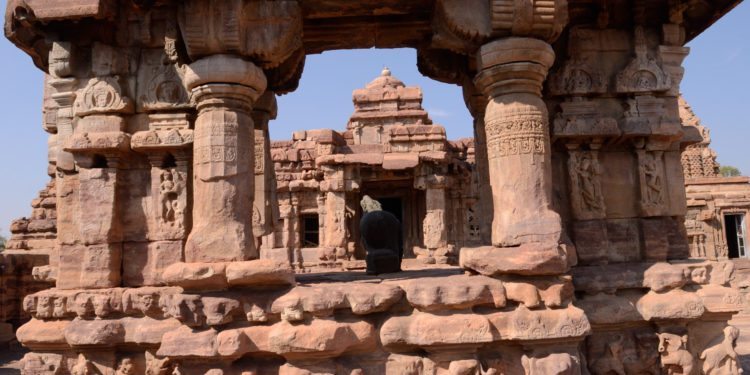
The red craggy sandstone cliffs form a rather stark background against the sky, accompanying me on my journey. Occasionally the scenery bursts into acres of green or bright yellow sunflower fields, but it is the mountains that gave me constant company. The River Malaprabha interrupts my journey as small streams of water flow across the rocks embedded in the dry river bed. Along the banks of the river in Bagalkote district is a golden triangle, where three towns formed a rich tapestry of culture and architecture in ancient times. The heart of the Chalukyan kingdom, I am travelling between two erstwhile capital towns – Badami and Aihole and in between, was Pattadakal, my destination.
It is probably the mountains that gave Pattadakal its old name – Kisuvolai or Raktapura or the Red City. It is believed that it was the site where the Chalukyan rulers were crowned as kings. Yet one cannot find a palace here; but there are monuments that are probably more magnificent than a palatial complex.
Sprawled amidst the mountains is the heritage site, where the temple complex opens into a fusion of architectural styles , which include the Rekha – Nagara –Prasada with Dravida Vimana .There are ten temples here , all located in a single complex except a Jainalaya which is slightly further away on the road returning to Badami. These temples were all built between the 7th – 9th centuries by the Chalukya kings. But my interest lies in the largest and the grandest of all the temples in the Pattadakal complex – the Virupaksha temple.
Built in the 8th century, the Virupaksha temple is also known as the Lokeshwara , named not after the king or a deity but after the queen , Lokamahadevi who commissioned this magnificent monument to commemorate her husband, Vikramaditya 11’s victory over the Pallavas of Kanchipuram. She is believed to have been inspired by the Kanchi Kailasanatha temple and she brought in sculptors from the Pallava capital to build this temple. It is believed that the Kailasantha temple built in Ellora was based on the model of the Virupaksha temple.
You need more than a day to look at every carving inside the Virupaksha temple. It was considered as one of the architectural marvels of the period, as even the architect was apparently given the title of “Tribhuvanacharya” or the master of three worlds. The temple is sheer poetry carved on stone and the walls, pillars, panels and columns are adorned with beautiful carvings from the epics and Puranas. A Nandi pavilion greets you at the entrance and the temple consists of a porch, a mandapa with 18 columns and a linga sanctuary.
The queens of the Chalukyan era probably vied with each other to build temples for their kings. Mallikarjuna temple, also known as Trailokeshwara temple, after the queen Trilokamahadevi who built it, is similar to the Virupaksha temple with its beautiful pillars and columns narrating stories from mythology, legends, puranas and epics. A Nandi pavilion stands in front , similar to that in Virupaksha temple and one can see two fragmented green stone Nandis here.
Both the Virupaksha and Mallikarjuna temples have left no stone unturned literally when it comes to carvings. Every inch of the shrines are carved – in outer walls, towers, friezes, reliefs, pillars and columns. Narratives from the Ramayana and the Mahabharata, forms of Vishnu and Shiva, episodes from Shiva ‘s life from his marriage to Parvati to his killing of demons, scenes from Krishna’s childhood are some of the stories carved here
As I sit by the mandapa to take notes from the local guide, the silence is suddenly broken by the arrival of several buses bringing in school students from local villages and towns. Colourful school uniforms fill the landscape as the students run in and out of temples, jump in front of mandapas, pose for photographs with the Nandi and lose themselves amidst the shrines, glad to be out of classrooms. I watch them in amusement for a while, before continuing my journey .

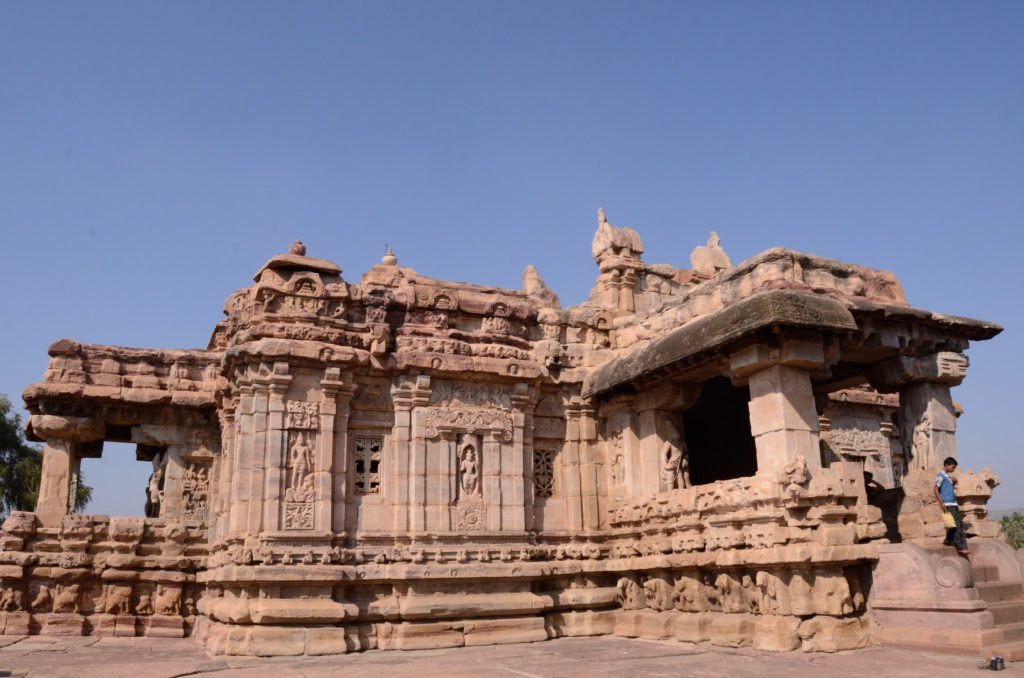
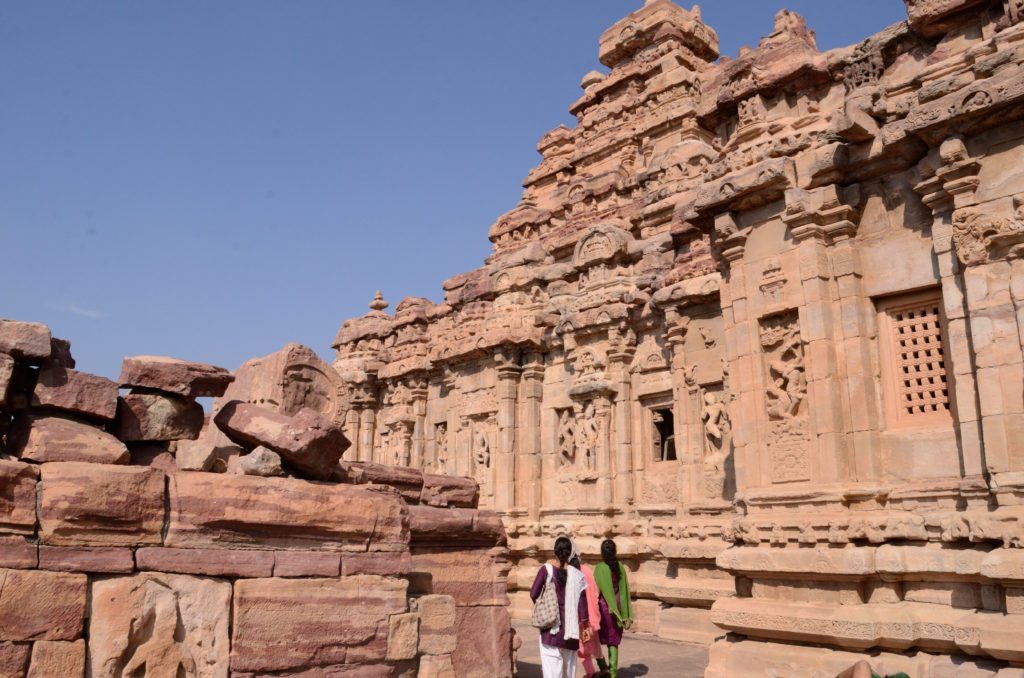
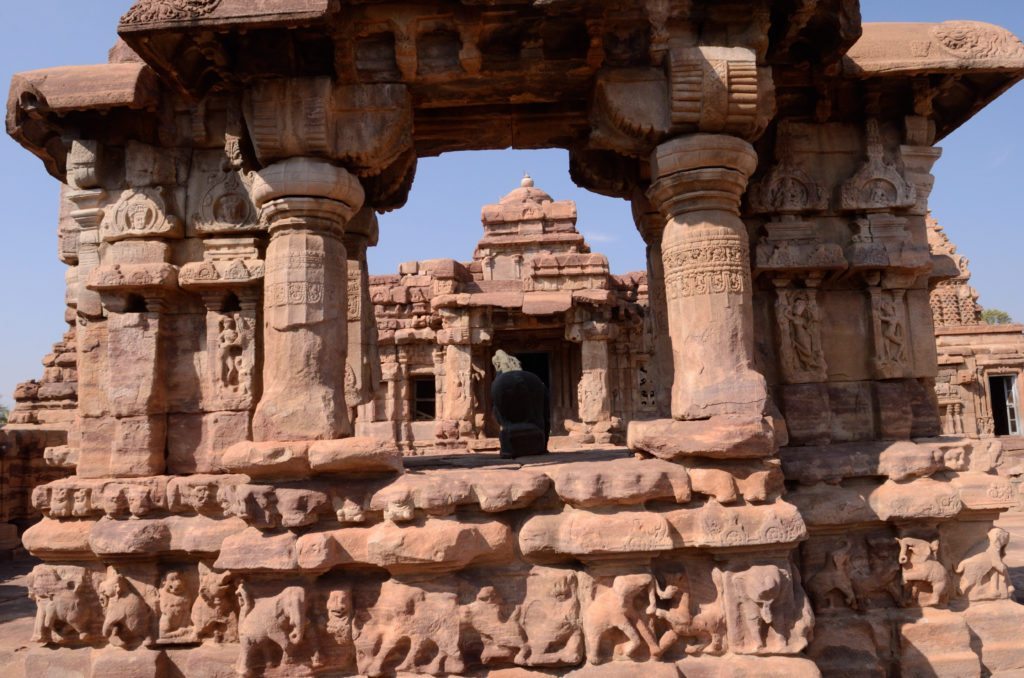
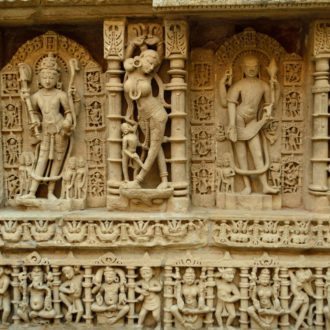
Hi Lakshmi,
Good piece, good pics. Like the new gender perspective!
I was amazed by 2 temples recently. Kanchi Kailasanathar for the beauty of sculptures and Karur Pashupatinathar for the grand architecture, both visited in April. See my facebook page.
Nice post. Re- kindled memories of my visit to Pattadakal.
What a beautiful description of a lost page of history for the modern Indian youth. Building a temple as the symbol of victory is indirectly a dedication to God. India should be proud of her heritage.
It is always a pleasure to read about Chalukyan temples at Pattadakal. Thanks for sharing.
Really good information. History is full of amazing things…
Beautifully curved Post 🙂
Hey Lakshmi!
So this is how you get the reader completely into the topic for all it’s worth?? It seemed for me like I was walking past those steeples, the cracked and hot courtyards and the adorned sanctum. Good job on the photography and I’m really looking forward to get immersed into your next story.
Thank you Afreen
Hi Anu,
It’s always a pleasure reading what you have to say on temples, seashores and forgotten landmarks. Your plan- a – trip- across- India is very tempting and worth a try I should say. This temple in Gangtok is good choice and the lanterns are captured with the absolute grace and purpose they were lighted for. That’s eventually my favorite in this blog.
It is nice to note that a lady, Lakshmi sharath takes courageous actions to reveal history of past for. The benefit of common public.